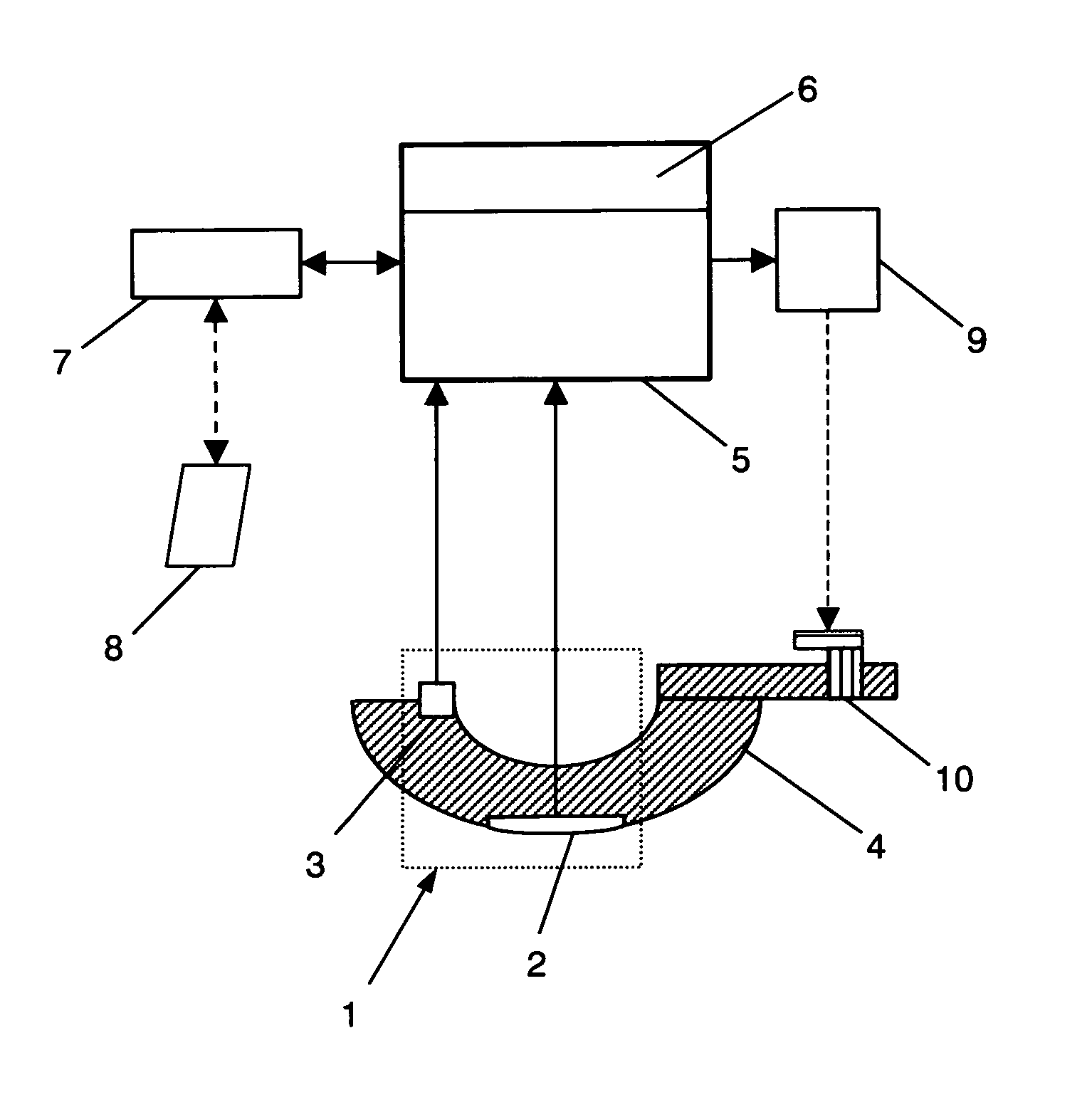Locking system for a vehicle and method for operating thereof
a technology for locking systems and vehicles, applied in the field of locking systems for vehicles, can solve problems such as erroneous functioning, unintended locking of vehicles, and compromise of operation reliability, and achieve the effect of reliably avoiding unusable actions of locking systems
- Summary
- Abstract
- Description
- Claims
- Application Information
AI Technical Summary
Benefits of technology
Problems solved by technology
Method used
Image
Examples
Embodiment Construction
[0022] A locking system for a vehicle is comprised essentially of a capacitance sensor 1 and a locking device 9, which is controllable via a control unit 5.
[0023] The sensor 1 is designed to have two control surfaces 2, 3 as sensor electrodes. With a not-shown reference electrode, for example a mass potentiometer, the sensor 1 together with the control surfaces 2 or, as the case may be, 3, forms a capacitor. The first control surface 2 is provided on the front side of a door external handle 4 of a not shown vehicle door. The second control surface 3 is located at an inaccessible location of the door handle 4, which is indicated in FIG. 1. The two control surfaces 2, 3 are connected with the control unit 5, which is preferably located at a central location on the vehicle. The control unit 5 is, for its part, connected with the locking device 9 and with a transmitter / receiver unit 7. The transmitter / receiver unit 7 is located in the area of the vehicle door, preferably in the door ha...
PUM
 Login to View More
Login to View More Abstract
Description
Claims
Application Information
 Login to View More
Login to View More - R&D
- Intellectual Property
- Life Sciences
- Materials
- Tech Scout
- Unparalleled Data Quality
- Higher Quality Content
- 60% Fewer Hallucinations
Browse by: Latest US Patents, China's latest patents, Technical Efficacy Thesaurus, Application Domain, Technology Topic, Popular Technical Reports.
© 2025 PatSnap. All rights reserved.Legal|Privacy policy|Modern Slavery Act Transparency Statement|Sitemap|About US| Contact US: help@patsnap.com


